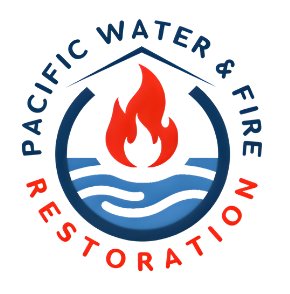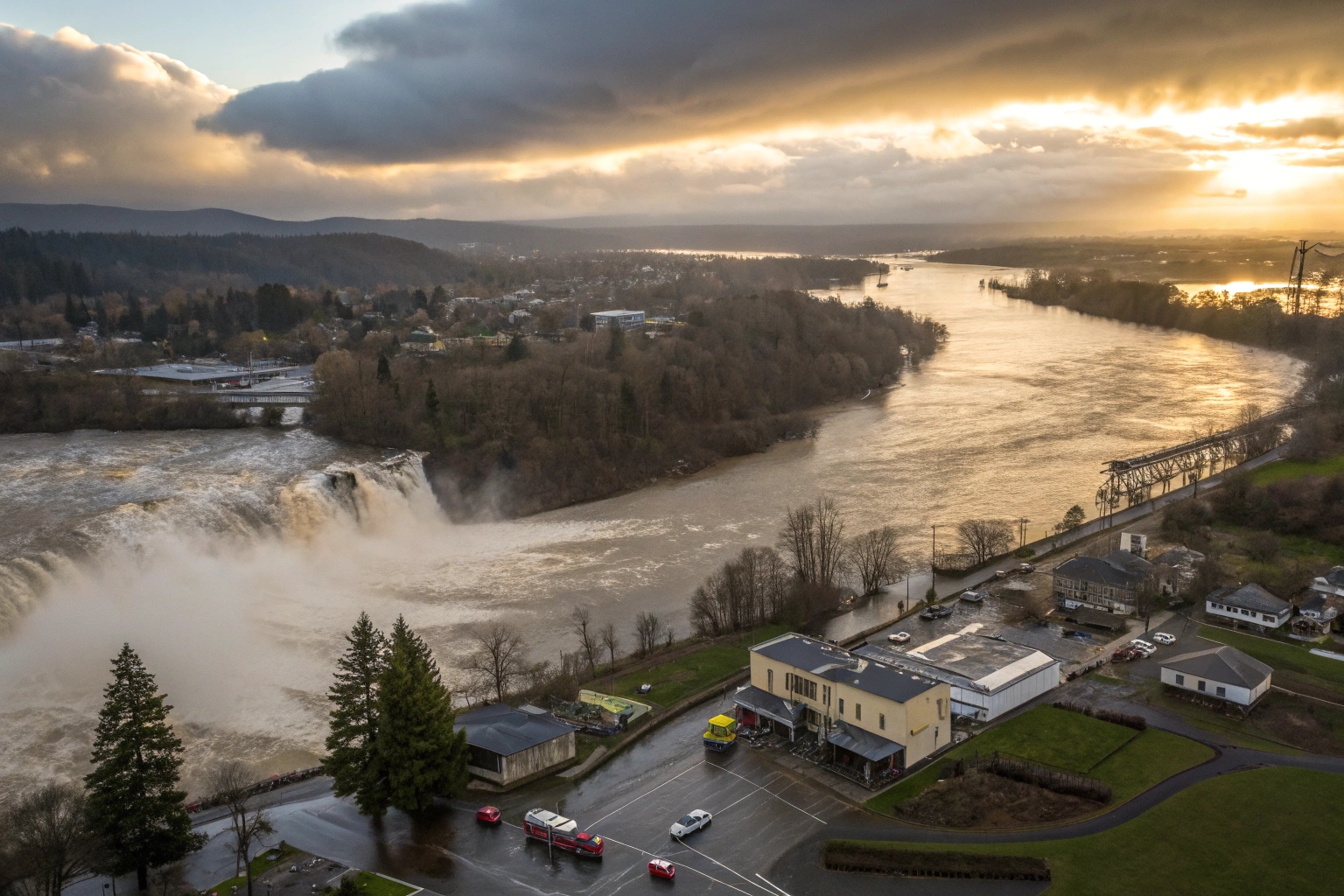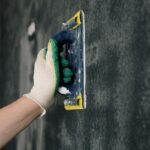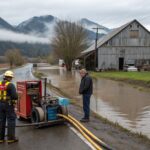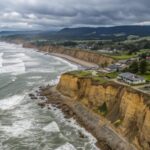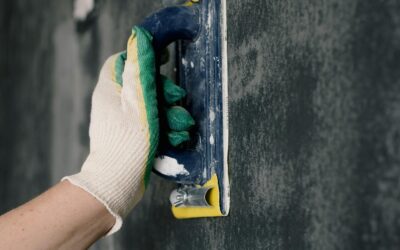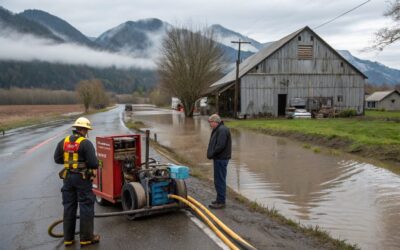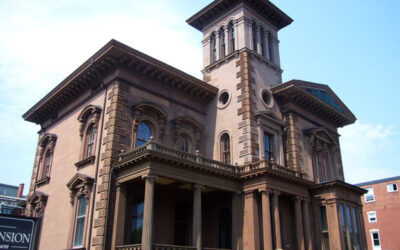In the Pacific Northwest, where the majestic Willamette and Clackamas rivers converge at Oregon City, the relationship between residents and water is complex. These waterways have shaped the region’s history, economy, and landscape—but they also present significant challenges when they spill beyond their banks. Flooding in Oregon City and the greater Portland area isn’t just a historical footnote; it’s a recurring reality that property owners must be prepared to face.
At Pacific Water & Fire Restoration, we’ve witnessed firsthand the devastation that rising waters can cause to homes and businesses throughout our community. We’ve also seen the resilience of Oregon City residents and their determination to rebuild and recover. This guide examines the unique flooding challenges in our region, the science behind effective water damage restoration, and practical steps property owners can take before, during, and after flood events.
Understanding Oregon City’s Flood Risk: A Local Perspective
Oregon City sits at a geographical crossroads that makes it particularly vulnerable to flooding. The confluence of the Willamette and Clackamas rivers, combined with the area’s topography and increasingly unpredictable weather patterns, creates a perfect storm of flood risk factors:
- Historical flooding patterns: Oregon City has experienced significant flooding events throughout its history, with notable occurrences in 1964, 1996, and more recently in 2019.
- Urban development impacts: Increased development has replaced natural ground cover with impermeable surfaces, reducing the land’s ability to absorb rainfall and increasing runoff.
- Climate change considerations: According to data from Oregon State University’s Oregon Climate Change Research Institute, the Portland metro area is experiencing more intense precipitation events, with a 12% increase in the heaviest rainfall days since the 1950s.
- Seasonal risk factors: The highest risk period typically runs from November through February, when atmospheric river events can dump extraordinary amounts of rainfall in short periods.
The neighborhoods along Abernethy Creek and low-lying areas near the Willamette River are particularly susceptible to flood damage. Local business districts, including parts of downtown Oregon City, also face significant risks during major flood events.
The Science of Flood Damage: Why Fast Response Matters
Flood damage is far more complex than simple water cleanup. Understanding the science behind water damage helps explain why professional restoration is crucial and time-sensitive:
Progressive Damage Timeline
When flood waters enter a property, the damage unfolds in predictable stages:
Within Minutes:
- Water spreads rapidly across floors
- Carpets, furniture, and personal items begin absorbing water
- Dyes and inks from fabrics and printed materials start to bleed
- Electronics exposed to water become compromised
Within 24 Hours:
- Drywall begins to swell and break down
- Metal surfaces begin to tarnish
- Furniture starts to warp and crack
- Odors appear as bacteria multiply
- Up to 30% more damage occurs with each passing hour
Within 48-72 Hours:
- Mold spores activate and begin colony formation
- Wood flooring warps and buckles
- Paint begins to blister
- Metal surfaces start corroding
- Biohazard contamination risk increases substantially
- Restoration costs increase dramatically
One Week and Beyond:
- Structural safety becomes compromised
- Mold damage escalates significantly
- Restoration becomes more complex and expensive
- Some items become unsalvageable
- Property value may be permanently affected
Categories of Water Damage
Not all flood water is created equal. The restoration approach varies significantly based on water classification:
Category 1 (Clean Water):
- Originates from sanitary sources
- Examples: broken water supply lines, tub/sink overflows, appliance malfunctions with water supply lines
- Poses minimal immediate health risk
Category 2 (Gray Water):
- Contains significant contamination
- Examples: washing machine/dishwasher overflow, toilet overflow with urine (no feces)
- Poses potential health risk
Category 3 (Black Water):
- Grossly contaminated with pathogens, toxins
- Examples: river flooding, sewage backups, standing water with microbial growth
- Poses serious health risk
- Requires specialized handling and PPE
Most river flooding in Oregon City is classified as Category 3, requiring thorough disinfection and often more extensive material removal due to contamination concerns.
Before the Flood: Preparation Strategies for Oregon City Property Owners
The most effective way to minimize flood damage is through preparation. Portland-area property owners can take several practical steps to reduce their risk:
Know Your Risk Level
- Check FEMA flood maps: Visit FloodSmart.gov to determine if your property is in a flood zone.
- Research local history: Speak with longtime Oregon City residents about historical flooding in your neighborhood.
- Contact Clackamas County Emergency Management: They can provide information about local flood risks and resources.
Practical Property Modifications
- Install check valves: Prevent sewage backup during flooding with backflow prevention valves on drains, toilets, and sewer connections.
- Elevate utilities: Move electrical panels, water heaters, and HVAC equipment to higher floors or platforms.
- Create proper drainage: Ensure downspouts direct water away from foundations and consider French drains for problem areas.
- Consider flood barriers: Temporary flood barriers can be deployed quickly when needed.
Emergency Preparation
- Create a flood emergency kit: Include essential documents, medications, clothing, flashlights, batteries, and non-perishable food.
- Develop an evacuation plan: Map out multiple routes from your property to higher ground.
- Document your property: Maintain a current inventory of belongings with photos and videos for insurance purposes.
- Store valuables properly: Keep important documents and irreplaceable items in waterproof containers or on higher floors.
Pro Tip: Consider installing water alarms in basements, crawl spaces, and near water-using appliances. These inexpensive devices can provide early warning of water intrusion before significant damage occurs.
During a Flood: Safety First, Always
When flooding threatens or occurs, prioritize safety above all else:
Critical Safety Guidelines
- Never walk or drive through flowing water: Just six inches of moving water can knock you down, and one foot of water can float a vehicle.
- Avoid contact with flood water: Treat all flood water as contaminated.
- Turn off utilities: If safe to do so, turn off electricity and gas before water enters the home.
- Follow evacuation orders: Comply immediately with official evacuation notices.
- Stay informed: Monitor NOAA Weather Radio, local news, or official emergency management channels for updates.
If You Must Remain in a Flooding Structure
- Move to higher ground: Relocate to the highest level of the building.
- Avoid enclosed spaces: Beware of areas where rising water may trap you.
- Wear protective clothing: If you must contact flood water, wear rubber boots, gloves, and eye protection.
After the Flood: The Recovery Process
Once the immediate danger has passed and authorities declare it safe to return, the recovery process begins. Here’s what Oregon City property owners should know:
Immediate Steps for Property Owners
- Document everything: Take extensive photos and videos of all damage before beginning cleanup.
- Contact your insurance company: Report the damage as soon as possible.
- Remove standing water: Use pumps or wet vacuums if electrical safety permits.
- Begin moisture mitigation: Open windows and doors if weather permits to start the drying process.
- Remove saturated materials: Carpet pads, bedding, and heavily saturated items may need immediate removal.
- Contact restoration professionals: For significant flooding, professional help is essential.
The Professional Restoration Process
At Pacific Water & Fire Restoration, we follow a comprehensive, science-based approach to flood damage restoration:
- Emergency response: Our 24/7 team arrives quickly to assess the situation and prevent further damage.
- Safety assessment & stabilization: We identify structural hazards, address immediate safety concerns, and secure the property.
- Water extraction: Using industrial-grade extractors and pumps, we remove standing water rapidly.
- Contamination control: For Category 2 or 3 water damage, we implement containment protocols and apply appropriate antimicrobial treatments.
- Structural drying: Strategic placement of commercial air movers and dehumidifiers accelerates the drying process.
- Moisture monitoring: We use advanced moisture meters and thermal imaging to track the drying process and ensure no hidden moisture remains.
- Repair and restoration: Once thoroughly dry, we restore the property to pre-loss condition, from replacing drywall to rebuilding affected areas.
- Final inspection: A comprehensive review ensures all restoration work meets our exacting standards and your property is safe to occupy.
Understanding the Technology Behind Effective Restoration
Modern flood restoration uses sophisticated equipment and techniques that dramatically improve outcomes:
- Thermal imaging cameras: Detect hidden moisture behind walls and under floors
- Moisture meters: Provide precise readings of moisture levels in different materials
- Commercial-grade dehumidifiers: Extract moisture from the air and building materials
- Air scrubbers and HEPA filtration: Remove airborne particulates and potential contaminants
- Structural drying equipment: Specifically designed to dry wall cavities, subfloors, and other hard-to-reach areas
This technology, combined with IICRC-certified training, allows our Portland-area restoration professionals to salvage materials that might otherwise require replacement and prevent long-term issues like mold growth.
Insurance Considerations for Oregon City Property Owners
Navigating flood insurance can be challenging. Here are important points to understand:
- Standard homeowners policies typically don’t cover floods: Separate flood insurance is usually required.
- National Flood Insurance Program (NFIP): This federal program provides most flood insurance in the US.
- Waiting periods: There’s typically a 30-day waiting period before new policies take effect.
- Documentation is crucial: Maintain detailed records of all damaged items and restoration expenses.
- Professional assessment helps: Having a certified restoration company document the damage can strengthen insurance claims.
Important note: Pacific Water & Fire Restoration works directly with insurance companies to document damage, explain technical aspects of necessary restoration, and help streamline the claims process for our clients.
Community Resources for Oregon City Flood Victims
Oregon City residents have access to several resources during and after flood events:
- Clackamas County Emergency Management: Provides emergency updates and resources
- Oregon City Public Works: Assists with infrastructure issues during flooding
- American Red Cross – Cascade Region: Offers emergency shelter and supplies
- FEMA Disaster Assistance: May be available after major declared disasters
- Oregon Emergency Response System: Coordinates state-level emergency resources
Preventing Future Flood Damage
While we can’t control the rivers or rainfall, property owners can take steps to minimize future flood damage:
- Implement proper landscaping: Create swales or rain gardens to direct water away from structures
- Install sump pumps: Consider battery backups for power outages
- Apply waterproofing treatments: Seal basement walls and foundations
- Elevate important systems: Raise electrical systems, appliances, and HVAC equipment
- Consider flood insurance: Even if not in a high-risk zone, coverage provides peace of mind
- Schedule regular inspections: Have professionals check drainage systems and foundation integrity
The Pacific Water & Fire Restoration Difference
When Oregon City properties face flood damage, having the right restoration partner makes all the difference. Our team brings:
- Local expertise: We understand Oregon City’s unique flooding patterns and building characteristics
- 24/7 emergency response: We’re available whenever disaster strikes at 503-201-7337
- IICRC certification: Our technicians maintain the industry’s highest training standards
- Advanced equipment: We invest in the latest restoration technology
- Comprehensive approach: From initial response through complete restoration
- Insurance coordination: We work directly with your provider to streamline claims
- Compassionate service: We understand the emotional impact of property damage
Taking the Next Step
Flooding emergencies require immediate action. If your Oregon City property has experienced water damage, don’t wait:
- Call our 24/7 emergency response team at 503-201-7337
- Schedule a free damage assessment and consultation
- Request our pre-emergency planning assistance to prepare your property
Our team at Pacific Water & Fire Restoration is committed to helping Oregon City property owners prepare for, respond to, and recover from flood damage. With the right knowledge, preparation, and professional support, you can face rising waters with confidence.
Pacific Water & Fire Restoration is a trusted leader in the restoration industry, staffed by a team of certified and highly skilled professionals. We are dedicated to helping residential and commercial clients recover from water, fire, mold, and storm damage throughout the Portland metro area. For emergencies, call 503-201-7337 anytime, day or night.
